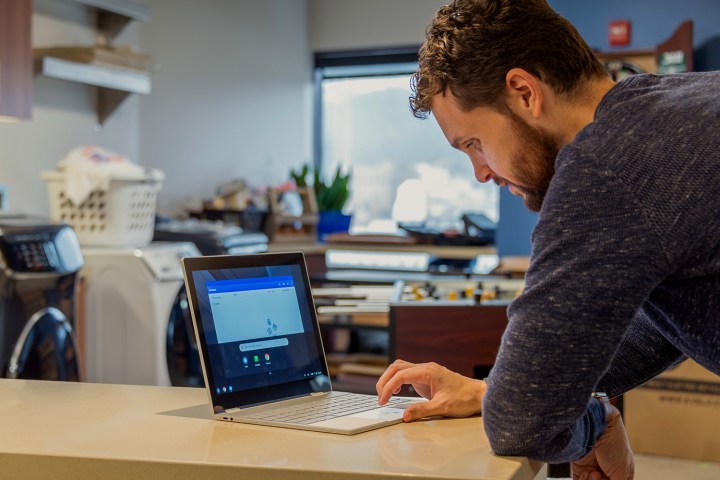
The Pixel-C was a gorgeous device in its own right — a 2-in-1 tablet meant to bridge the gap between tablets and laptops. It was beautifully made, with top-of-the-line hardware and materials. Its fancy magnetic hinge was an engineering wonder, too.
But in many ways, it was a failed experiment. It came at a time when Android didn’t have much in the way of multitasking or mouse support, yet it was bizarrely positioned as a (sorta-kinda) successor to the Chromebook Pixel. While it did eventually get some of that, Android apps were still far behind in terms of being optimized for full screen usage. It was too little, too late.
To put it over the edge, the Pixel-C was way too expensive for what it was. At an original price of $499 (plus an extra $150 for the keyboard), it was attempting to compete with the iPad rather than the cheaper Android tablets that inhabited the space at the time. It might look affordable if you bought Google’s argument that the Pixel-C could serve as a laptop replacement, but its capabilities never fulfilled that promise.
In other words, it was a over-priced, beautiful product that tried to do a little bit of everything — and failed. Remind you of anything?
In the post that addressed why the Pixel-C was removed, Google stated “As is common when a device has been out for a few years, we’re now retiring Pixel C, and it is no longer available for sale. […] Our newly launched Google Pixelbook combines the best parts of a laptop and a tablet for those looking for a versatile device.”
Google wants you to think its new Pixelbook builds the bridge between laptop and tablet in a different way. Funny enough, the link to the Pixel-C even redirects you to the Pixelbook product page. Yet the Pixelbook doesn’t solve any of the problems the Pixel-C had. It makes them worse.
Similar to the Pixel-C, the hardware of the Pixelbook is built with style and high- quality materials. It’s thin, sleek, and easily stands out from the crowds of MacBook imitators. In many ways, it’s the Chromebook I’ve always wanted to use.
The user experience, however, is plagued with a lot of the same software inconsistencies the Pixel-C had. Apps still aren’t optimized for full-screen mode, but now they also aren’t made for Google’s Pixel Pen, either. Multitasking doesn’t work well, with Google only now attempting to fix the basic problems of Android apps not being able to run in the background, and adding split-screen support. At times, the Pixelbook feels like a device built by engineers that never used the software it runs.
Windows 2-in-1s and iPad Pros aren’t perfect either but, over the years, these products have done more to bridge the gap between mobile and PC than any other device. They’ve done it by picking a strategy and sticking with it. Everyone made fun of Windows 8 when it came out, but its key premise has been refined into a truly multi-purpose OS in Windows 10. The iPad also caught flak, but no one’s laughing at the plus-size iPhone now.
The only hope for the Pixelbook is that Google learns lessons from what Microsoft and Apple have done, rather than repeat the mistakes of the Pixel-C. Either that, or it’s time to throw everything out and start from scratch.